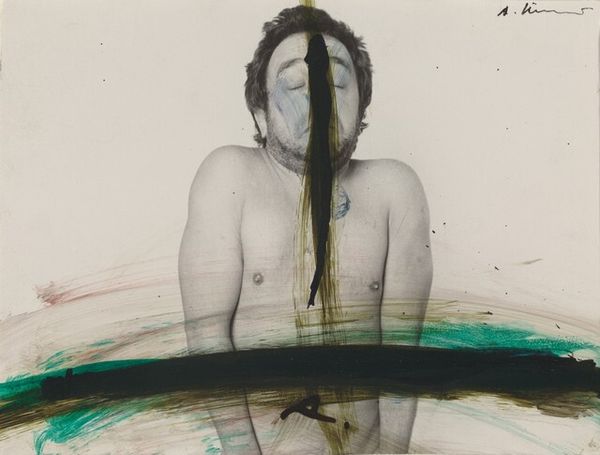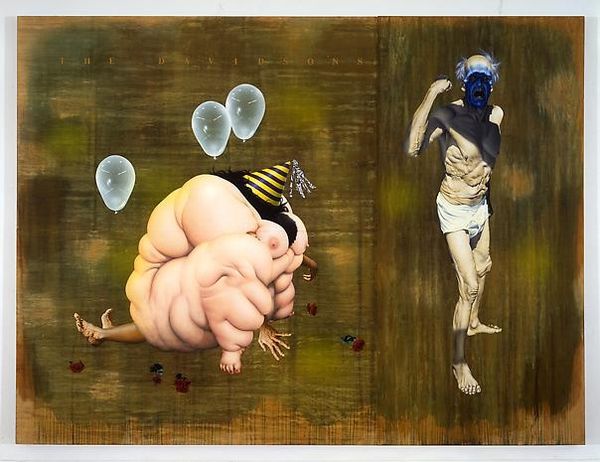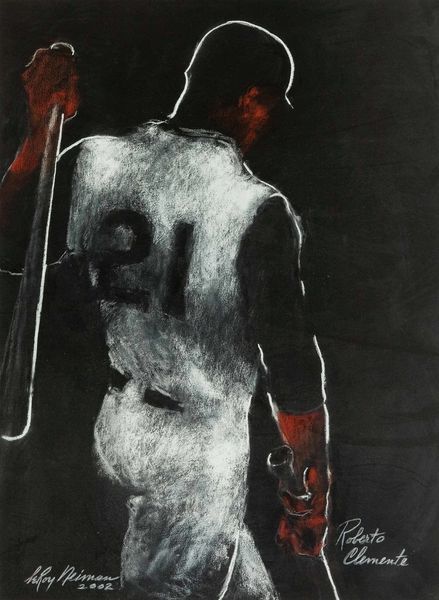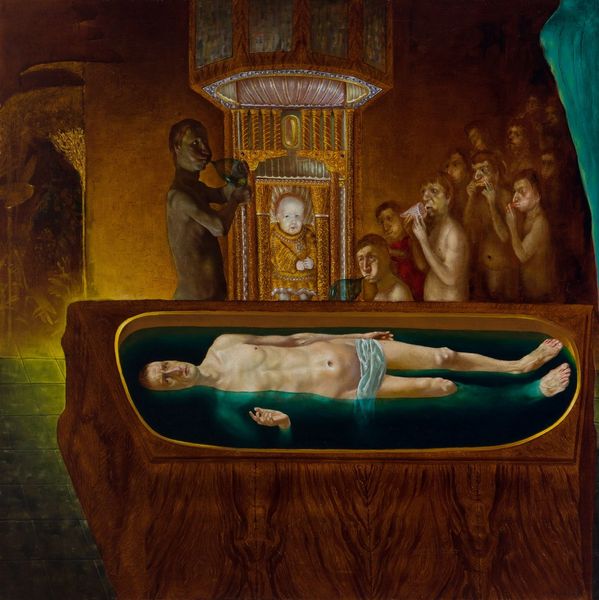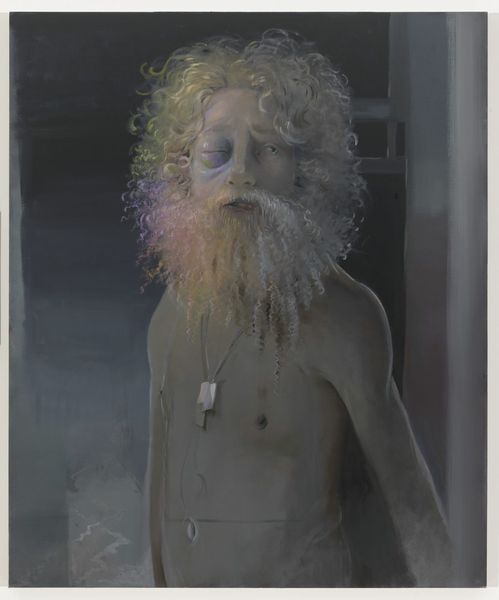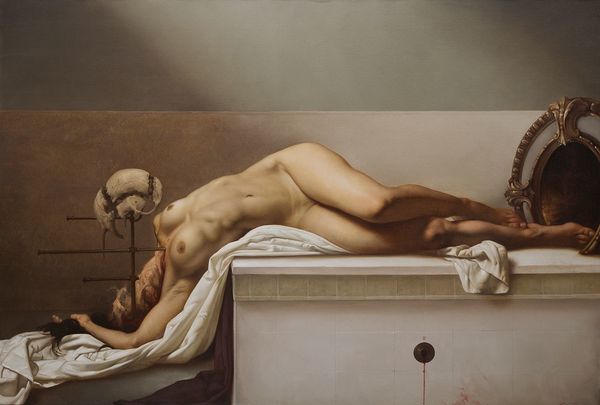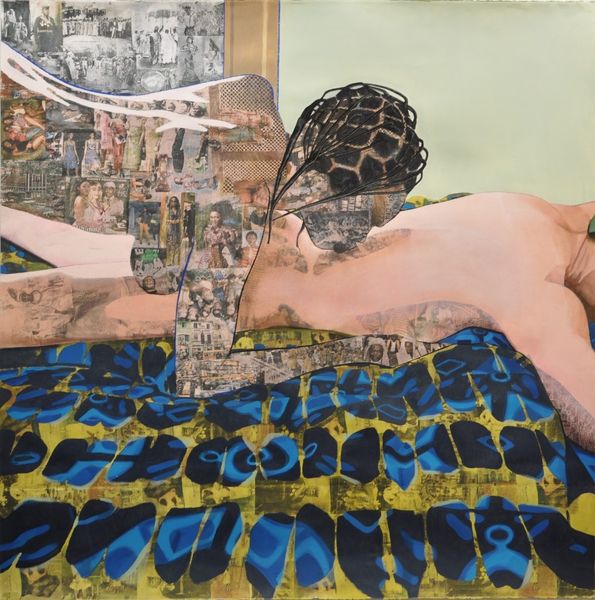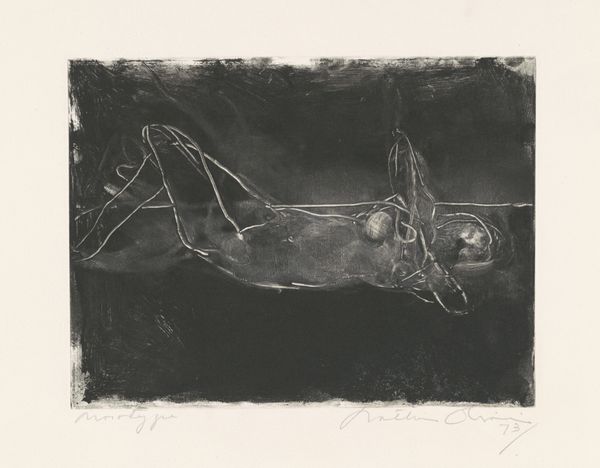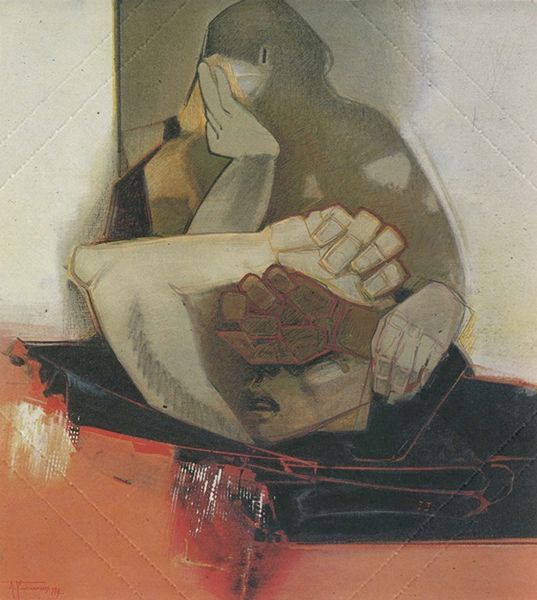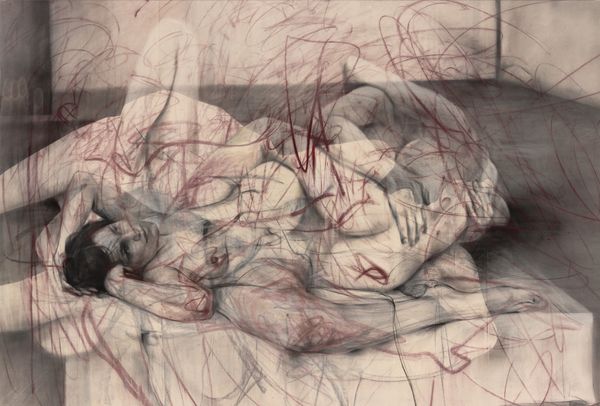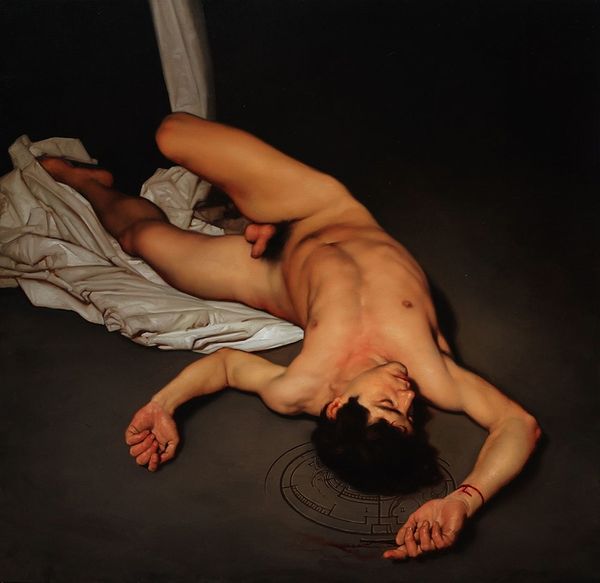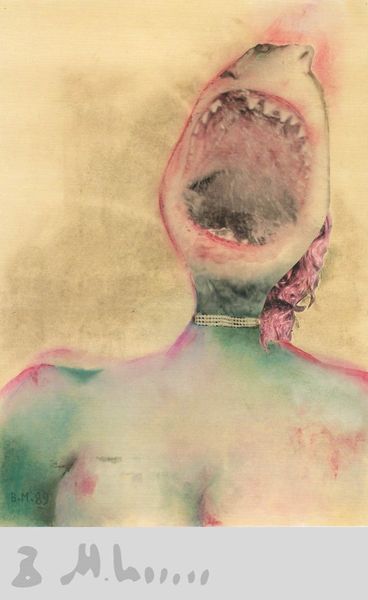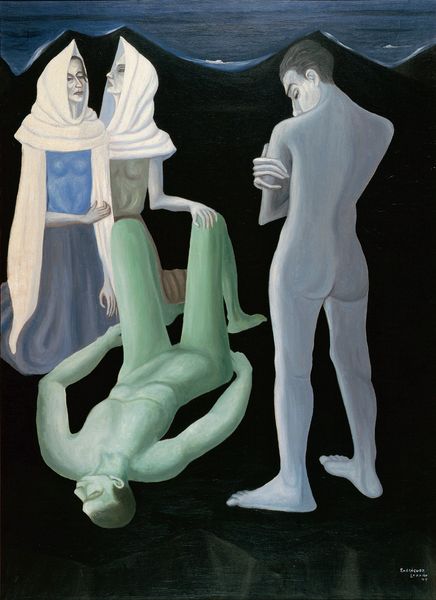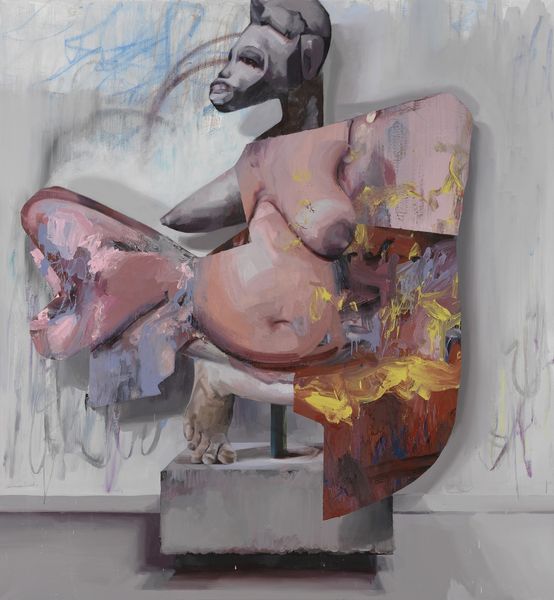
Dimensions: image: 518 x 375 mm
Copyright: © The estate of Richard Hamilton | CC-BY-NC-ND 4.0 DEED, Photo: Tate
Editor: This is "He foresaw his pale body" by Richard Hamilton. The figure's distorted pose in the stark white tub creates a rather unsettling feeling. What compositional elements stand out to you? Curator: Note the stark contrast of light and shadow; the pale figure dominates against the murky ground. The artist presents the composition almost as a study in the tension between the geometric precision of the tub, and the organic form of the figure, dissected by implied planes. Do you see how this fractures the conventional reading of the form? Editor: Yes, the tension you mention is clearly visible. I hadn't considered the interplay of geometric and organic forms. Curator: Considering the composition, the figure's pose and the work's title, it allows a unique reading, which is the result of this artistic study. Editor: That’s a great insight. Thanks for expanding my understanding!
Comments
tate 7 months ago
⋮
http://www.tate.org.uk/art/artworks/hamilton-he-foresaw-his-pale-body-p77494
Join the conversation
Join millions of artists and users on Artera today and experience the ultimate creative platform.
tate 7 months ago
⋮
He foresaw his pale body is the seventh in Hamilton’s ongoing set of illustrations to James Joyce’s novel Ulysses (first published in Paris, 1922). The project was begun in the late 1940s and to date comprises seven etchings created during the 1980s (Tate P77473, P77483, P77484, P77491, P77492, P77493, P77494), and a digital print, The heaventree of stars (P78316). Hamilton was first inspired by the idea of illustrating Joyce’s complex, experimental novel in 1947 while he was doing army service and began making sketches the following year, only to put the project to one side in 1950. It was not until 1981 that he made the decision to create one illustration for each of the novel’s eighteen chapters, and a nineteenth image – a portrait of one of the novel’s main protagonists, Leopold Bloom – destined as a frontispiece. He conceived these images as large intaglio prints. However in 1990 the artist became tired of commuting to Paris, where he had been working with the master printmaker Aldo Crommelynck for twenty years, and abandoned etching and other traditional forms of fine art printing. He spent much of the 1990s developing his skill in creating images destined for printing on a computer.
